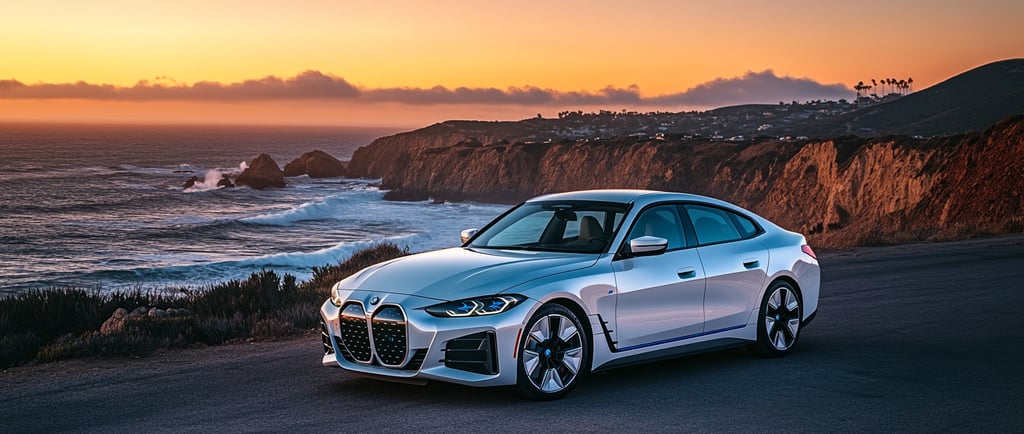
SDG&E Time-of-Use for EV Leasing: Make Your Monthly Budget Predictable (No Solar Needed)
Leasing fixes your payment; SDG&E’s time-of-use pricing can steady your “fuel.” This guide shows how to save without solar by charging in Super Off-Peak hours (midnight–6 a.m.), explains EV-TOU-5 vs. TOU-ELEC in plain English, and gives a quick formula to estimate monthly charging cost—plus renter tips and what to check in your SDG&E portal. Rates and plan names change; confirm current details in your account before enrolling.
8/11/20254 min read


Executive summary: Leasing already provides budget predictability. Pair it with SDG&E’s time-of-use (TOU) electricity and you can make your “fuel” cost predictable, too—by charging in Super Off-Peak hours (typically midnight–6 a.m.) and avoiding 4–9 p.m. You don’t need solar; you just need the right plan and a charging schedule.
Rate note: Utility rates and plan names change. Use this article as guidance, then confirm the current details and prices in your SDG&E account before you enroll.
Why this matters for a lease
A lease removes most big surprises: major repairs are covered by warranty, and maintenance is limited and predictable. The two variables you still feel each month are insurance and fuel. With an EV, “fuel” is electricity. Time of Use (TOU) pricing gives you control: set the car or home charger to start at 12:00 a.m., and you’ll take most of your energy at the lowest price window. That’s how you keep the fuel line of your budget steady.
How Time of Use (TOU) actually saves money (without solar)
SDG&E prices electricity by time of day:
On-Peak: roughly 4–9 p.m. (most expensive)
Super Off-Peak: overnight (cheapest), with a seasonal mid-day spring window
Off-Peak: everything in between
If you charge while you sleep, you’ll buy most of your kWh at the cheapest rate. No solar required; just enroll in a TOU plan and schedule charging for the Super Off-Peak window.
Which plan to pick (plain English)
EV-focused TOU (e.g., EV-TOU-5 or its bundled variant): Whole-home TOU designed for EV drivers. It includes a monthly basic charge but usually offers the lowest overnight price. It tends to win if you can keep most charging to midnight–6 a.m.
General TOU (e.g., TOU-ELEC): Also time-based pricing, typically no EV-specific fee, but the overnight price is usually higher than the EV-focused plan. It can make sense if you rarely charge at home or have very low monthly miles.
On a CCA (e.g., San Diego Community Power)? Your time windows come from SDG&E’s schedule; generation rates may differ. You still aim for overnight charging—just compare the total $/kWh in your portal before choosing.
Rule of thumb: If you regularly drive a few hundred miles a month and can let the car charge overnight, the EV-focused plan often pencils out despite the monthly fee. If you charge at home only occasionally, a general TOU plan may be fine.
The two-line math to sanity-check your cost
Use this to drop EV energy into your monthly budget:
Monthly kWh ≈ miles per month ÷ mi/kWh Monthly $ ≈ Monthly kWh × (your Super Off-Peak price) + any plan fee
Example (illustrative):
900 miles ÷ 3.2 mi/kWh ≈ 281 kWh. Multiply by your overnight price from the plan page, then add any monthly fee. That’s your “fuel” number—usually far steadier than gasoline.
Set it once, then forget it
Enroll in your chosen TOU plan inside the SDG&E portal.
In your vehicle app or charger, set charging to start at 12:00 a.m. (and avoid 4–9 p.m.).
Keep heavy household loads (laundry, dishwasher) out of On-Peak when possible.
Revisit after your first full billing cycle to confirm you’re landing most kWh in Super Off-Peak.
Renters and condo owners
You still benefit. Level-1 (120V) overnight at home often covers a typical commute and aligns perfectly with Super Off-Peak. If your building has shared Level-2, use the app to finish by early morning. Top off at work when convenient; keep home charging for the cheap hours.
A quick word on incentives and hardware
Programs change. SDG&E frequently promotes EV pricing plans and, at times, vehicle rebates—but residential charger subsidies come and go. If a rebate isn’t available right now, you can still capture most of the savings simply by choosing TOU and scheduling charging. Check SDG&E’s incentives page before you hire an electrician.
Bottom line
Bottom line: Leasing fixes your payment; TOU charging makes your “fuel” predictable. Set your plan, schedule charging for midnight, and you’ve locked down your monthly energy cost.
If you’re exploring an EV lease in San Diego, we can help. Check our San Diego Lease Specials or request a custom quote—we’ll show you what’s competitive right now and what fits your budget.
FAQs
Do I need solar to save on EV charging in San Diego?
No. Enroll in a time-of-use (TOU) plan and schedule charging during Super Off-Peak (typically midnight–6 a.m.). There can still be very material savings to your monthly electricity costs, even without solar.
Which SDG&E plan fits most EV lessees?
If you can charge mostly overnight, the EV-focused plan (e.g., EV-TOU-5) often pencils out despite its monthly fee. If you rarely charge at home, a general TOU plan (e.g., TOU-ELEC) may be fine. Compare the total $/kWh in your portal.
What hours are cheapest to charge?
Avoid 4–9 p.m. (On-Peak). Aim for midnight–6 a.m. (Super Off-Peak). There’s also a spring mid-day Super Off-Peak window.
How can I estimate my monthly charging cost?
Use: miles per month ÷ mi/kWh × Super Off-Peak $/kWh + any plan fee. Example: 900 ÷ 3.2 ≈ 281 kWh. Multiply by your overnight price, then add the monthly fee if your plan has one.
I rent—can I still benefit?
Yes. Level-1 (120V) overnight fits Super Off-Peak. If your building has shared L2, schedule to finish by early morning. Top off at work when convenient.
(Rate names and prices change—confirm current details in your SDG&E account before enrolling.)

Don't Lease a Car in San Diego Without Us!
Contact Us
© 2025. CarOracle LLC. DBA San Diego Lease Deals. All rights reserved.
2173 Salk Avenue
Carlsbad, CA 92008


San Diego Lease Deals is a brand of CarOracle LLC, providing expert auto leasing services across Southern California.
